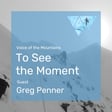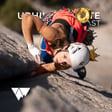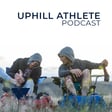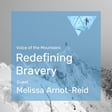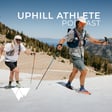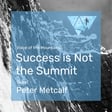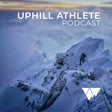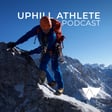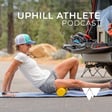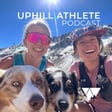Introduction to Aconcagua's Challenges
00:00:00
Speaker
The way people or athletes underestimate Kaguya is that ah it's a really big climb. It's non-technical on the normal routes as as we discussed, but it's still a big climb.
00:00:10
Speaker
It takes a lot out of you. So it is that, it's a great challenge, but it's absolutely a rewarding experience when you're up there on the summit.
00:00:27
Speaker
Welcome to the Epilathletic Podcast. My name is Steve House and I have a really great episode for you today. With me here today is Coach Martin Zor, three-time Aconcagua climber and coach to many Aconcagua athletes and climbers over the last years. Welcome, Martin.
00:00:48
Speaker
Hi, Steve. Thanks, Steve. It's good to be here.
Podcast Episode Overview with Steve House
00:00:51
Speaker
So today we want to talk a little bit about the challenge and logistics of climbing Aconcagua.
00:01:00
Speaker
but we want to spend most of our time in our area of expertise, which is how to physically prepare and train for Aconcagua. So Martin, you've been there, you know, a number of times. I'll admit right off the bat, I've never climbed Aconcagua, never guided it, never went down there.
Martin Zor's 2019 Aconcagua Experience
00:01:16
Speaker
So why don't you just sketch out for us what Aconcagua is in terms of a mountain and and what the challenge is? Sure. um Yeah, I've been to Hakun Kaguya. It's been a while, five five and a half years, end of 2019.
00:01:34
Speaker
ah For me, it was a very important milestone for me as a climber, but also for the experience ah as a for me as a coach as well. So I really have fond, good memories of that.
00:01:47
Speaker
So so For me, Akonkago was the first like real high altitude summit. ah Before then, I only climbed in the Alps or i was trekking in Nepal. So the highest altitude I reached ah until that point was maybe 5,500 meters.
00:02:05
Speaker
ah But this was a real step up for me, a big unknown. ah So I went there just without expectations, but trying to make a the style that I like the most, which is try to climb fast and light.
00:02:19
Speaker
um And so um I eventually managed this. I approached this mountain ah through a 360 route.
00:02:30
Speaker
So we can talk about the different routes later, but it's important to know that there are two main access valleys towards this mountain.
Preparing for Aconcagua's Altitude Challenges
00:02:38
Speaker
ah But maybe backtrack, Akonkaguya is the highest mountain of the American continent, so counting south and north, ah higher than Denali, almost 7,000 meters.
00:02:50
Speaker
ah you can We can't say what it is in feet. I'm not good at this. It is 6,982 meters, and I think that boils down to 22,838 feet.
00:03:02
Speaker
Okay, great. Yeah, that's good. um So it's actually the highest mountain outside of Asia. That's probably good to realize that. So but if you go you if you want to go higher, well, you need to go to the Himalayas in Karakorra.
00:03:20
Speaker
So it's ah it's pretty exciting. But otherwise, the Aconcagua, at least the normal routes, they are non-technical, so we go advanced hike to some extent.
00:03:32
Speaker
It can definitely change with conditions. It can snow and it can get icy. So it's good to be prepared for any scenarios.
Routes to Aconcagua: Options and Strategies
00:03:39
Speaker
But we can consider it the not a very technical climb.
00:03:44
Speaker
Nonetheless, it's a very challenging one. There are four routes and variations, the normal route via the Plaza de Mulas, the 360 route from Plaza Argentina, the Polish Traverse, and the Polish Glacier.
00:03:59
Speaker
And these are all a little bit kind of related, if you will, there's a lot of these routes. And you know i think you sort of cut your teeth on the the doing a speed ascent from Plaza de Mulas,
00:04:13
Speaker
I believe you took the 360 route and you were able to complete that in, what was it, like three and a half hours or something insane, right? Yes. ah So I approached the mountain ah through, well, they have the the names, these valleys, Vacas Valley and and the other one. Anyway, that doesn't matter really. The guiding companies will we'll guide you there.
00:04:37
Speaker
What is important to know is the Plaza de Mulas is the considered the normal route. It's the easiest one. ah The approach towards the base camp is shorter. So it takes usually two days of hiking, ah which is then usually interspressed with one rest day.
Approaching Aconcagua: Base Camps Explained
00:04:52
Speaker
So so like four or five hour hike towards the intermediate camp.
00:04:57
Speaker
ah From there, the next day you go just for a short hike towards the south face, the very impressive one, south face of Aconcagua. And that's considered like an easy rest day, also staying at the same similar alitude and then the third day you go towards the plaso the base camp.
00:05:15
Speaker
Whereas if you go towards Plaza Argentina, so that's the eastern side of the mountain, it usually takes about three to four days. So it's definitely longer. It's about 45-50 kilometers in total distance.
00:05:27
Speaker
But it also allows you to acclimatize ah calimatize ah progressively. um And then the 360 route, so Surumkum navigates the mountain.
00:05:39
Speaker
So that's why it's called that way. ah It's pretty beautiful. Like both routes are amazing for me. It's a stunning place. The undies are a special place. Condors flying above your head and so it's really is quite stunning.
00:05:54
Speaker
But and as a character, ah like geologically, there's it's a desert. It's a very like barren rock. ah Not so many glaciers nowadays, ah but it's still beautiful.
00:06:07
Speaker
So what are some of the challenges of climbing Aconcagua?
The Climbing Experience: Multi-Day Challenges
00:06:12
Speaker
let's break it down into like different different factors. So when it comes to the physical demands of the climb, so you're looking into ah like multi-day,
00:06:25
Speaker
climb from camp to camp with the increasing altitude. So the altitude has a big effect on ah new your capacity. um If you break it down into the days, it's easy to look up the ah the way the the camps are situated on the mountain.
00:06:42
Speaker
ah So I would say the first part is actually getting to the base camp. I think the base camp is around 14,000 feet, 4,400 meters. So ah that starts to be definitely felt and you are sometimes kind of for ah pushed into relatively fast fast climb.
00:07:02
Speaker
Usually what follows after getting to the base camp is you do a carry of material to the first camp, come back down and recover. What then follows is then actually climbing. from camp to camp higher and higher.
00:07:14
Speaker
um First, ah so there there are three camps, main camps on the normal route, 5200, 5600, and then 6000 meters eventually, cholera camp, which is the highest one.
00:07:27
Speaker
ah So there are different logistics on the mountain. So most people, most athletes have to carry their weight, everything, all the gear ah to the first camp, second camp, and eventually even the third one.
00:07:40
Speaker
So that can be quite a quite a big ah big carry. it's ah It's quite important and ah you have to be ready for it. So I'm hearing that you really have to carry heavy loads.
00:07:54
Speaker
You have to do like basically steep hiking and difficult ground like scree and that kind of stuff. And then you have to deal with, for most of us, pretty pretty extreme altitudes.
00:08:07
Speaker
Yes. Some, so some athletes choose to not do that. They actually hire reporters for that, but then, uh, know, that that's something that you have to answer for yourself, like ethically, or how do you want to approach this climb?
00:08:19
Speaker
So that's definitely possible. But, uh, most of the athletes that I work with, they chose to do it themselves.
Gear and Weather: High-Altitude Essentials
00:08:25
Speaker
So then, you know, you have to really be ready for it. And that takes a while to build up that capacity.
00:08:30
Speaker
ah It's good to know that with the cold, extreme cold, actually, and the winds, you have to have the high altitude gear pretty much. So you're walking and really big boots.
00:08:42
Speaker
ah You have to carry also crampons in case the terrain above is icy or snowy. So that's a lot of weight. And walking in that scree, it's like moving rocks often ah with the big boots. It's it's it's pretty nasty. It's ah it's not nice.
00:08:58
Speaker
So it's yeah i think I think it's important to to be aware of this ah when you're preparing for the climb. And it sounds like on just doing a little rough math on summit day,
00:09:10
Speaker
you know you're going to be doing basically 1000 meters of gain and descent. um That's probably the lightest day in terms of load carrying, but that comes on top of a bunch of back to back days of carrying very heavy backpacks in very difficult conditions of scree and big dear clunky gear,
00:09:32
Speaker
ah hard to balance It's windy. You know, one of the things that people don't think about when they hear about wind is it makes it very difficult to sleep in a tent that's like flapping all night. I mean, I've spent a lot of nights in flapping tents and it can it can really be exhausting because you just can't you know, you just never get into that deep sleep because there's so much noise around you.
00:09:54
Speaker
and and energy, like just like this, like that just this anxiety that you're, you know, is is hardwired into us that somehow we're going to get blown off the mountain, even, even though we're, we're most certainly not plus trying to eat.
00:10:09
Speaker
That's another huge challenge on these high altitude expeditions is just getting enough calories in what, what is it that, you know, we need to,
00:10:22
Speaker
think about when we think about physical physically preparing for an expedition like
Training Regimen: Building Aerobic Base
00:10:27
Speaker
this? Is it is it the just the aerobic base? Is it the strength? Is it the muscular endurance? Is it the balance?
00:10:36
Speaker
I mean, there's so many different things here. How do you approach that as a coach? Well, yeah, you named it. You named it. So the all the factors that, so I, the way I approach this as a coach is actually doing this, try to break it down into the factors and then see, okay, like how each of these factors is important and try to then cover them ah more or less in the, in the training.
00:11:00
Speaker
And some of them basically are in the same category, right? So we talk a lot, lot we talk about ah the aerobic base having that
00:11:10
Speaker
everything else and on tur of it we We kind of include the rest, right? So um maybe back to what you said before, ah what what is ah involved during this Aconcagua climb? So as I was saying, you need to approach the base camp and then carry a lot of weight ah to the higher camps and you're facing higher and higher altitude. which is exhausting which is a back sleep quality which is affecting the nutrition food intake.
00:11:38
Speaker
So everything is challenged, you're challenged mentally. So ah it's just good to be aware of this all and ah then actually planning and getting higher and higher towards the camp two, camp three, ah getting ready for that big summit day, which is actually in when it comes to Akonkwekwa, that is the biggest elevation gain.
00:11:57
Speaker
ah If you start from the camp three from cholera camp on the normal route, so you're you're going for 1000 meters elevation gain. um three thousand thirty five hundred feet elevation game For those that haven't done a lot of high altitude mountaineering, need to realize that starting at a high altitude and then going another thousand meters, you know, 3,300 feet up and then coming back down,
00:12:26
Speaker
you're going to feel that. You're always going to feel that. It's very common. Also, like, for example, on Denali, you roughly climb that high, like this kind of thousand meters on summit day. If you sort of look around, I mean, even Mount Rainier is about 1200 meters on summit day.
00:12:43
Speaker
Mont Blanc is around 1000 meters on the summit day from the height. You know, a lot of these climbs have that. um amount of climbing on summit day and what happens is you know you you climb up to an altitude you're well above what you're acclimated to and then you come back down but as you come back down you're actually still sort of getting if you're getting sick you're actually getting sick on the on the way down usually oftentimes and you're feeling if not sick you're just feeling worse and worse and worse and so coming back down
00:13:14
Speaker
It's one of the reasons that, you know, besides just the mental letdown of having been to the summit and accomplished something, you are physically feeling worse as you as you return to high camp. And coming back into the high camp is, you know, people don't talk about it, but it's often one of the hardest moments.
00:13:33
Speaker
But let's go back to, you know, we've talked a lot on this channel about the importance of aerobic bays. We know that this is absolutely key, especially at high altitudes where we have to be aerobic.
00:13:47
Speaker
We really can't go over anaerobic at 6,800 meters. it would ah It's it's pretty pretty difficult to do and it's also not very productive. So these this is this is absolutely critical for people climbing Aconcagua and it just takes a certain amount of time. so why don't you,
00:14:07
Speaker
How long an athlete or a potential acupacabra climber need to be preparing? Like how many weeks or months you feel like is ideal for someone to start building their aerobic base with structured training?
00:14:25
Speaker
a great great point here you're mentioning so um when an athlete approaches us coaches and uh has some certain expectations about uh okay i want to climb a certain mountain in in couple of months so we need to kind of do a reality check so to speak but ah let's talk about akon kagawa here uh akon kagawa season by the way we didn't talk about that starts in december and ah goes probably until late February, sometimes March, but that's getting late. So ah now in in June, we're looking into like having six months to prepare.
00:15:01
Speaker
So is that enough? So ah of course that it depends. we always have to approach and individually ah where they are right now and so try to assess, do some testing and see, okay, like we have six months to to to train. So what can we achieve in those six months?
00:15:19
Speaker
So and we can kind of guess, but also we work with physiology, with the knowledge of physiology. And we know that the adaptations, ah that are that are coming from the training, they have a certain timeline. So from there we can we can do the planning and i think we can do a pretty good job with ah most most most athletes ah to prepare them for this climb.
00:15:42
Speaker
So then, as i as as I mentioned before, i kind of work with those factors, try to break that break it down into the factors you need to be prepared for, well, back-to-back days, long hikes, ah is with increasing steepness, ah work with fat fatigue, altitude, the nutrition, all those ah all all those challenges ah in a very harsh environment with cold wind possibly and ah ah worse worse and worse sleep and looking into a really big summit day on top of all all of these so all those days leading up to the summit.
00:16:18
Speaker
And just, by the way, sometimes You will start the summit day not from Camp 3. Some companies actually decide to do this from the Camp 2. So just to make it more challenging, sound more challenging, ah you might actually be doing 1500 meters elevation gain in that last day.
00:16:34
Speaker
um so And then, as you mentioned, ah also go down. So that is the descent we often cannot forget. And ah that's where it sometimes goes very wrong.
00:16:46
Speaker
you just don't have enough reserve reserves in you to actually come down safely. So of course, you're you you have a guide and porter next to you helping you. But of course, you wouldn't want to be independent. and have that in you to come back down.
00:17:04
Speaker
ah So all in all, how to prepare ah coming back to the aerobic base. So that's really ah that's really the kind of go the core of the of the training for endurance.
00:17:18
Speaker
ah so it comes down to we need to but establish determine where your aerobic threshold is an aerobic threshold is explain to you what the intensity zones are and why we are actually trying to establish them right so we want to is uh we want to target a certain type of metabolism talk about aerobic efficiency um and uh then of course it's that's not everything uh you mentioned like the aerobic ah how is that important. I definitely touch during the training cycles, through during the the whole year cycle, I definitely go into the anaerobic zone sometimes with the athletes who try to also improve their lactate threshold capacity.
00:18:05
Speaker
um We try to increase the VO max
00:18:11
Speaker
so like arabic engine if we can call it that way. ah But when it comes to the climb, the most specific intensity that you will need to have, like really strong, is really the Arabic basis, so-called.
00:18:25
Speaker
And that is the most important one. Yeah, and I want to highlight something that you just said and make sure that people hear this, that you know because we are constrained, for lack of a better word, by our physiology. And when we condition our aerobic base, we are changing our metabolic properties. you know I think I would really encourage people to, if they haven't already, go and read some of the blogs and listen to some of the other podcasts that we have at Uphill Athlete about aerobic metabolism and how what happens when you train it.
00:19:05
Speaker
Because there's really no shortcuts. If somebody comes to us eight weeks before Akinikagwa, I wish I had a magic pill that they could swallow to make them aerobically fit, but I just can't help them as much as if they come to me eight months before.
Long-Term Aerobic Development
00:19:20
Speaker
If I eight months with an athlete working towards a big climb, we can make incredible changes in their metabolism as it pertains to the ability to go at moderate and low heart rate intensities for hours on end, carrying heavy packs and doing all the things that are required on an expedition like this.
00:19:42
Speaker
So the more time you give yourself to prepare, the much better off you'll be. There's really no shortcuts to developing your aerobic system. And, you know, this is one of the uncomfortable truths of training for mountaineering is that you need a lot of time to do it.
00:20:01
Speaker
And I also really encourage people to think about this on a multi-year Scale of you know, not just what do I need to do in the next two or three months? But you know, I'm a mountaineer.
00:20:14
Speaker
How do i continually improve my aerobic base over? Years because I'm always going to climb mountains because that's part of my life and that's really when you get into these long-term incredible ah positive adaptations
00:20:32
Speaker
yeah I agree with you, Steve. I think that we can mention the core training principles here, right? So it's kind the it's kind of the ah so just really working from the base. So keeping it easy, easy, moderate. And ah yes, you want to go sometimes to the high intensity.
00:20:52
Speaker
But I guess where most athletes, most people get it wrong is just pushing a little too hard, a little too often, or almost all the time, almost every session, you just kind of, I need to push hard to get better.
00:21:04
Speaker
And that is where it often goes wrong, where it leads to plateaus in in your performance. or just not really seeing seeing getting better or getting stronger You wonder why, why am what am I getting wrong?
00:21:16
Speaker
So that's really one of the first messages we try to ah try to get to the athletes is just a try to stay patient and you will see the improvements in everything.
00:21:29
Speaker
But really try to be consistent. um I guess another training principle. Sorry if I may interrupt. I just want something you said. I just want to summarize and we said it a thousand times before, but you cannot shortcut aerobic base building with high intensity training.
00:21:48
Speaker
High intensity training absolutely has an important place within training, but it needs to come on top of the aerobic base, especially when we're talking about high altitude mountain bearing objectives. And I think you know you're you're really good at at blending those as a coach.
00:22:03
Speaker
And that is sort of some of the magic of either building a great training plan or whether or building a great training program ah for an athlete that you're coaching is to is to blend all these different modalities. So what is you know, if if we're looking at someone, let's let's take a hypothetical athlete and they're, let's say, six, eight weeks into working with you, what does a week of training look like for that person?
00:22:35
Speaker
So guess after having established ah the the thresholds, just to really making sure that we have those right. um So I guess what the week looks like, I will it start with the rest day.
00:22:48
Speaker
That is the maybe also mentioning the recovery, the importance of the recovery. That's where actually the body is getting stronger and it's adapting to all the training. ah ah I would say then i will...
00:23:00
Speaker
kind of have the two categories of the workout. So the key sessions of the week and then the maintenance sessions. So what those key sessions can look like, it really depends on the training phase.
00:23:11
Speaker
So that phase of the training I'm trying to, I'm trying to work in on one, one factor. So let's say it can be the Arabic base. So the key sessions could be just a simple zone two sessions or the Arabic sessions.
00:23:25
Speaker
which can with which what i'm then changing through the throughout the training phase or in that one week is the volume. So it can be one hour, it can be two hours, it can be actually five, six hours in the zone, which definitely is super important.
00:23:40
Speaker
And then actually also covers the fatigue resistance. So dealing with a lot of fatigue. So you know then I'm actually ah like looking for certain certain metrics, certain like a feeling like how does that feel how does it when did you get tired ah how did you How did that fatigue show up? Is it more kind of cardio function or is it so the heart
00:24:05
Speaker
because of the fatigue or is it the muscle or fatigue? um And it can be, and so back to the key sessions, ah I would say the strength part.
00:24:16
Speaker
So usually there is at least one strength session in the week. ah And so ah we can be looking in the maximum strength or we can be ah we can be covering the muscle muscleular endurance ah protocol, which which is for me the very specific one before most of the expeditions so that's the capacity that i definitely definitely want to improve the most.
00:24:41
Speaker
And then the rest of the week looks ah like the maintenance. So it can just be simply the the easy, moderate sessions ah or then recovery. is So very easy. Instead of having complete rest day, I asked the athlete to just go out, but just very easy.
00:24:55
Speaker
Don't really focus on gaining the fitness. It's more about helping and facilitating the the recovery. Yeah, and I want to highlight a concept that we talk about as coaches, not just internally at uphill athlete, but universally among endurance coaches, that there is this concept of ah the training density.
00:25:18
Speaker
And this is the idea that over a period, and you can use seven days or 10 days or whatever period you want, let's stick with the seven days, and how...
00:25:31
Speaker
how is that, how dense is that training? So for example, if I have a really ah hard strength workout on Wednesday and then a really long aerobic effort on Thursday, the next day, that's that's really high density.
00:25:47
Speaker
There may be a time and a place for that, but this is where you you need to know the difference between when it's right the right moment to do that for the athlete versus having the strength training on, say, a Tuesday and having the long endurance aerobic session on say a Saturday with lots of time in between, with lots of these kind of recovery workouts in between. That's a ah lower, much lower training density.
00:26:14
Speaker
And this is another one of those dials that as as coaches we're working with, because it's not only the workouts, right? It's also the the human, what is going on in their lives, how much are they working, how long is their commute, how many responsibilities do they have, because stress is stress and the body doesn't really differentiate between training stress and stress due to other external factors. so
00:26:45
Speaker
We need to really think about that. And that's something that as we progress, we can increase the density as an athlete adapts and make some of these hard sessions ah be purposefully close together.
00:27:01
Speaker
And one of the things that I know that that you and I have talked about and weve talked about internally as a coaching team very often is The art of starting to build back-to-back long zone two sessions, which I think is very relevant for Aconcagua, you know, typically for most athletes, it's Saturday and Sunday, because most of our athletes are are working professionals and they have full-time jobs. So that's the weekend is when they have the time.
00:27:31
Speaker
And so that's, what does that start to look like if you're gonna, if somebody gets to the point where they're gonna be able to do, two longer zone two sessions. How are you, what does that look like? Is it like one hour and three hours? Is it two hours, two hours?
00:27:46
Speaker
what is What is that sort of looking like? Sure. um Yeah, I like it. it's You actually touched on ah some important points here. so ah maybe first to that most of us are not a professional athletes. So we actually need to also include all the other stressors in our life. So then, of course, ah I need to account for that and ah adjust the plan based on the athlete's life and duties and recovery or the lack of sleep, for example. right So the
00:28:17
Speaker
ah the plan ah can be looked perfect on ah on the calendar, but ah it needs to be adjusted a daily basis. So the the daily, pretty much daily communication is a key there.
00:28:29
Speaker
um Then how do I kind of ah keep making sure that, let's say you have the space for the strength and the recovery after the workout and then how far apart are these key sessions, right? So I would say maybe somewhere beginning or middle of the training phase. We talk about months ah leading to the climb or to the to the project, ah to the objective.
00:28:53
Speaker
So I guess we try to really develop these these kind of unique factors, but then sometimes the life is not perfect. So the athlete kind of needs to shuffle things around.
00:29:04
Speaker
So what happens if i we put like hard training, strength session and maybe you long zone two workout, long hike, long uphill day, ah close to together. So I actually sometimes encourage that, ah possibly closer to leading to the climb because yes, as you as you already mentioned, this is working possibly the the fat fatigue resistance, we call it. or the durability so you are actually tired leading ah going into the next session and that is something very important also to to develop that also helps me as a coach to kind of increase the training load ah sometimes most of the time I guess most coaches ah try to increase that the overall training load in the and the training block ah by increasing the volume or increasing the intensity or both but sometimes we don't need to do that we actually can
00:29:55
Speaker
and shuffled the workout as it is with that given volume and putting the harder sessions together. And that actually increases that training stress and it's ah It's quite an efficient way to do it.
00:30:07
Speaker
I think with most of ah the the type of athletes we have, the the time crunch athletes. And so just something I wanted to mention. But then I guess coming to the specific phase before the objective, what did that can look like.
00:30:21
Speaker
So yes, i believe that for most athletes, that would be the weekend. We have the time. We have the time to train. So I sometimes so actually put the day off just before the Friday to make sure that the athlete has actually the capacity to do the big big long day or actually the big back-to-back.
00:30:40
Speaker
So that is for me also very important to actually okay like prepare that body and to really go big and deep into hitting that physiology. um and um So that's one but one thing.
00:30:53
Speaker
And then I guess it really depends. it ah it is It can start with the first big day. So that's basically coming from that rest day making sure that the body is rested and so i just kind of go bigger i put like the bigger day on as a first and the second day so it can be like four hours two hours so so Saturday to Sunday or it can be equal it really depends on on the options that the athlete has as well I also try to ah make sure that mentally it is it is manageable so some athletes they don't have hills or mountains around ah which is
00:31:32
Speaker
and objectives. Sometimes it's really just the the gym gym option. So Stairmaster, incline treadmill, where we can really focus on those specific ah factors i like the uphill capacity.
00:31:44
Speaker
And so putting the you know asking the athlete to do four, five, six hours on the Stairmaster, I mean, that's sometimes it's necessary for sure. But I try to be careful with that because the mental aspect is really important. and the the boredoms just the mental strain of it is really quite, quite high. So, and then asking the athlete to do it again, even maybe less so on Sunday, I mean, it's sometimes very, very tough ask, but, um, you know, try, try to, I guess, juggle all these, all these aspects, uh, the physical and the mental, uh, based on the daily side.
00:32:21
Speaker
I want to highlight something that you said, which is, I think an area where a lot of people who are working from a training plan or working from the books or, working from Reddit or wherever they're getting their training information, make mistakes. And that is moving workouts around.
00:32:38
Speaker
When people look at a training plan, whether uphill athlete training plan or from another provider, Often they'll take the training plan and then they'll look at it the beginning of the week and they'll say, well, this doesn't fit my schedule. So I'm going to move this to this day and this to this day and that to that day, because that's when I have time because I have the babysitter this day or have this work trip that day and they don't understand.
00:33:01
Speaker
they don't take into consideration the distribution of the training loads over that week has been very carefully thought through. And when you do that, you're randomizing the training density, ah which is a really good way to get over trained, honestly, because especially if you inadvertently if you inadvertently increase the training density too much too soon, more than what you're ready for.
00:33:30
Speaker
And, or you shoot yourself in the foot and cause yourself to plateau because you're already well along in your training. And all of a sudden you've, you've taken the training density from high to really low.
00:33:43
Speaker
And so if you've done that, you're not going to adapt and you're not going to increase in your fitness. So this is a concept that's really important. It's really thought through. It's something that coaches spend probably more, a lot of their mental energy thinking about when they're working with athletes. So I want want to highlight that. That was a really good point you brought up.
00:34:03
Speaker
Yeah, I agree. I think that's, we can agree on this the for each athlete. I guess the back to the individuality, that's the one of the most important training principles. So each athlete is individual and they are at their given level of fitness. So you cannot just ah throw at the the athlete's ah ah training plan for,
00:34:25
Speaker
wrong most of the cases so there's the optimal dose of training and we need to figure it out very quickly in the beginning of ah the coaching process and yes just monitor through throughout then the training phases a monitor the athlete so I guess the fatigue is an important part if of course the fatigue has to happen so that the body adapts to it.
00:34:48
Speaker
But if there is too much of it, then the overtraining is a real danger here. And that's something to absolutely so avoid. ah How do we do that? I guess to just ah communicate, try to see all the metrics in training peaks, so ah the response to the training and then the recovery metrics.
00:35:05
Speaker
and you know So if you if it's a resting heart rate, the heart rate variability, or just ah just really the communication. just to kind of see okay notice the the science of fatigue or um yeah the stagnation, ah lack of response to the training, those are the signs of the excessive fatigue, I guess. And it's just good to take ah take a rest day, take an easier week and making sure that we do do this right.
00:35:34
Speaker
I want to drill down on something that you just touched on, which is the data. And we are living in an era where athletes are swamped with data, potentially.
00:35:47
Speaker
and If you are an expert or if you are a coach, you will understand the when and where and how of something like heart rate variability. But if you are not an expert, ah this is this is very difficult to to put into context of everything else that's going on with your physiology.
00:36:11
Speaker
I want to encourage people to,
00:36:15
Speaker
both those working with a coach to communicate this, and if you're not working with a coach and using a training plan to listen to this simple response to this question, how am I feeling?
Athlete Self-Assessment in Training
00:36:26
Speaker
Because this simple question is going to assimilate all of the data that that we have, whether you know it or not. And it's not a number or any of these, it doesn't need to come from a wearable. your Your subjective feeling of how your body is doing is going to incorporate how you slept, how well you how well your nutrition has been supporting your training, how much stress you're under, or not you know,
00:37:00
Speaker
how hard the workout was, how high the training density is all these things are gonna kinda come together and and be very, very valuable. you know I look at a lot of athlete data and i if my athletes don't so put a subjective,
00:37:19
Speaker
note about how they're feeling in their workout in training peaks, I always text them and it becomes a joke because it's like the most common question in my in my chats with my athletes. It's just like, how are you feeling?
00:37:32
Speaker
How are you feeling? How are you feeling? And i was like, you know what I'm going to ask you? It's how are you feeling? Because you didn't tell me over there in the comments. So I need to know before you know so I can think about how to adjust or whether or not to adjust the training for you know the the coming days.
00:37:52
Speaker
So that's a super important ah thing and I want people to really encourage them to. And it also connects, if I may become slightly philosophical for second, think it connects very deeply to the purpose of climbing mountains and training and running ultras and all these things that our community is doing, which is really like understanding ourselves and making space for checking in on on ourselves and how we are doing.
00:38:22
Speaker
And that's a practice, right? You got to do that to get good at it. So I think that that's ah super valuable. So thanks for things for highlighting that, Martin. I think that's really key. I think so. I would just maybe yeah respond to this. so That is, i guess we can go into all those topics separately. And I think many, many are, have been covered in other podcasts here on this space, but ah yeah, how do we measure intensity? Which metrics are we looking for? And I think I can definitely attest to this, that ah what research is showing and what kind of the coaching world is
00:38:58
Speaker
is is saying is that ah yes we are getting more and more data and we can definitely use that it takes a lot of experience and knowledge to be able to read between kind of the different lines and on the graph ah but when it comes to ah the subjective feeling it still has a big big place if not the most important one actually in the end of the day even with elite athletes when it comes to the coaches asking them how was the How was it? How do you feel?
00:39:26
Speaker
All the data is showing great, but the athlete says, that I wasn't feeling it today. And so that the coach, good coach, will definitely pay attention to this and maybe step on the brake bit because there is something going on under the surface where the heart rate or breath rate or...
00:39:43
Speaker
power meters, ah they don't really show yet, but something is going on there. So I think the RPE, the rate of perceived exertion using that, or then basically the feedback, subjective feeling is so important.
00:39:56
Speaker
But then I guess what we, ah why we are here for as well, for the athletes and when, why they are hiring us is they just don't really know what, how to read themselves, maybe at the beginning.
00:40:08
Speaker
So for me, it's quite an exciting part of this, ah of the coaching work is try to help them with this and this is so relevant and so important in the mountains and in the extreme altitude, especially.
00:40:19
Speaker
You need to know ah yourself, like how hard is the effort right now? Can I manage this? ah Will I be okay in one, two, three hours? Will I have enough capacity?
00:40:31
Speaker
for the descent as we discussed before and Akon Kagawa on Everest on these high mountains. It it is so, so important. And so I try to always kind of work with the data, connect the dots, establish the heart rate zones, but then definitely make sure that the athlete starts to understand, okay, this is what the zone one, zone two, zone three, zone four, et cetera, they feel like.
00:40:57
Speaker
and so they can connect the dots and so they don't need to rely on the heart rate data. yeah why Why is that also super important to say within our space of mountain sports is that heart rate is not a reliable metric when it comes to, well, already like fatigue, dehydration, which happen in a, you know, multiple hour workout. So the long workouts, you have to rely less and less on heart rate as a metric of intensity.
00:41:23
Speaker
ah But then when it comes to altitude, when it comes to heat ah and it like other stressors actually, life stressors. ah like Hydration is a big one. yeah Yeah, I mentioned the hydration, right? So then they affect the they have think the heart rate in a way that you just cannot rely on it.
00:41:41
Speaker
And when it comes to a concagua, coming back to a concagua, you will not be able to rely on heart rate. It's it's just at that level already like base camp and anything higher. It will just be off.
00:41:51
Speaker
It will not reflect the intensity. It will mostly reflect the stress that the body is going through with the altitude with very dry air. So to a large extent, you'll you'll be dehyde dealing with a lot of dehydration during the climb. So you need to, you should really know ah how to pace yourself, pacing strategies, right? so um So, and yeah, I think these are very valid, great points.
00:42:20
Speaker
If you're enjoying the show and want to take the next step in your training, join our newsletter and receive a free four-week sample training plan. Head on over to UphillAthlete.com slash Let's Go, and once you sign up, you'll instantly get a link to try out some of our most popular training plans.
00:42:37
Speaker
It's a great way to get a feel for how we train our athletes for big mountain goals. Check it out at UphillAthlete.com slash Let's Go. UphillAthlete.com slash L-E-T-S-G-O.
00:42:53
Speaker
I want to try to pull together some of the different threads we've talked about in terms of the ah different threads we can pull on to help people train for climbing Aconcagua.
00:43:05
Speaker
And then I want to move into acclimatization as its own subject for a moment. But we have talked about aerobic base we've talked about the consistency required of building that we've talked about building that into the capacity to do longer back-to-back sessions meaning one day two days in a row of long zone two sessions we've talked about the strength training and we didn't go deeply into it but you did mention
00:43:37
Speaker
the periodized approach that we use that all coaches use for, uh, project strength training from, you know general strength to a maximum strength to muscular endurance, which is the most specific and most relevant talking Kagawa, but you need to do the other two prior to that and have had a good buildup to get the most out of the muscular endurance. Um, of course you have to continually maintain the strength you've developed, particularly in your core as you as you move through these these longer periods. We've talked about the amount of time all of this takes.
00:44:13
Speaker
We didn't spend a lot of time talking about high intensity, but the muscular endurance is part of that. you know It's typically done at zone three where we'll also talk about many in many cases, if we have enough time, if I don't have enough time with an athlete, a I would omit this, but if I have enough time with an athlete, I'm absolutely going to do, you know, higher intensity intervals, like zone four intervals.
00:44:37
Speaker
our own People, um I often explain this to people that those are like strength training for the heart, essentially, because we're asking the heart to work really hard for a really short period of time. And that's really healthy for that muscle.
00:44:51
Speaker
And that is really valuable at high altitude. And of course, doing all of this while staying out of injury, staying in good health, um you know and and and hopefully having some time to work through this period on the technique of mountaineering, whether that's hiking up and down scree slopes or or getting to a glaciated peak or something. But you know that's something you want to try to to build into this progression.
00:45:20
Speaker
Usually, as was for you, Martin, most people that go to Akinikawa, it's a big step up from something they've they've done before in terms of e the complexity of all of these different factors that mountaineering makes up.
00:45:36
Speaker
I think high altitude mountaineering is sort of ah a cruel mistress in a way because you know yeah everything gets more complicated the more difficult it gets. There's no way, there's it's very difficult to just increasing the difficulty of one sliver.
00:45:54
Speaker
You can't just increase the altitude. You increase the altitude and all the other factors by nature get harder. So it's very difficult to of kind of remove some of the variables so you can test yourself in in limited ways as you move through the way it would be in a lot of other sports like rock climbing, for example, where you know you can you know really short routes and do many of those before you start doing longer routes, for for example.
00:46:24
Speaker
But that's sort of a a quick summarization. i want to talk about specifically acclimatization.
Optimal Acclimatization Strategies
00:46:32
Speaker
I want to just sort of preface this by saying the best thing you can do for your acclimatization is have a really good aerobic base and be healthy, right? not and And those two, I want to, those are, I'm going to emphasize both of those equally because it's important not to have any kind of infections or anything like that. No kumbu cough as we like to call it.
00:46:52
Speaker
um And to be well aerobically trained. And then the actual physiology of acclimatization is not something we're going to go deeply into here, but I want to talk about it as it pertains Akin Kogoro because it is what most people are looking for or most people are identifying as the primary challenge. They want to go and climb an almost 7,000 meter peak.
00:47:19
Speaker
How was this for you when you went there for the first time?
00:47:24
Speaker
So ah for me personally, Akon Kagwa was, as I said in the beginning, beginning big step up ah with altitude, so something very new. um And i think I came prepared in a way that I live in Chamonix. I have access to the Alps, so but it's still a relatively medium ah level of altitude compared to Akon Kagwa and anything higher in Hermione.
00:47:49
Speaker
But for me, the biggest advantage was that i used to work on the high altitude lift here in Chamonix, which goes to almost 4,000 meters. And I where was working up there as kind a lift guy, i think nothing fancy, but the acclimatization. The organization part was amazing. I i basically spent there like four or five days per week, sometimes even sleeping up there.
00:48:13
Speaker
And for those who know Chamonix and Mont Blanc and the area, so that's ah it's not that easy. It's quite a substantial altitude already. um and so I think it did something to my body like I worked out there for 11 years ah so that for me was a like a big confidence builder so i that I would be fine so this was basically happening and like after the summer season i had a several weeks off so I was not at that altitude and I flew to Argentina I went to Aconcagua but I was pretty confident that my body would respond really like quickly um so then coming through Argentina, you fly to Mendoza, that's a kind flatlands in Argentina.
00:48:56
Speaker
You take a bus or a van, they bring you up to Penitentes, which is the kind of a road across the border you get to Chile. um And that's, I think, close to than three thousand meters and you start your hike towards the the the base camp. So I was just really training hard since the beginning, not not something where we want to recommend, but I was really kind of really motivated to try myself, to try ah ah like they're strong, fast time and that altitude.
00:49:27
Speaker
So um I guess we don't need to recommend this kind of strategy for most athletes. ah But yes, I think to talk about the acclimatization and what's needed, um you you need the time. you need Your body needs time. So for me, I spend there almost three weeks, which is kind of the limit as well with the permits.
00:49:46
Speaker
ah You need a permit. ah You need to pay for the permit on Akonkagoa. So the limit is 20 days, meaning like you enter the park, on the approach towards the baseca So that takes you a couple of days, right? So you need to, ah with the climb needs to happen within 20 days.
00:50:02
Speaker
But then most of the companies that you go with, the logistics are set pretty much to, I think two weeks, ah two two weeks and then there is some space for bad weather so probably like twenty twelve fifteen days. I don't think many people stay there for longer than that. so ah So when it comes to acclimatization and how long it takes, ah mostly you should be fine. Mostly your body should have the time to adapt.
00:50:26
Speaker
um I would say maybe i can mention some companies they nowadays the
00:50:35
Speaker
additions, we can talk about that possibly. like So the idea is actually to pre-acclimatize back at home using either the rail altitude if you live you are lucky enough to live close to the rail mountains and high high enough to actually offset the d adaptations.
00:50:50
Speaker
Or you can pre-acclimatize at home using hypoxic tents, generators, and that's the topic we've covered already in different podcasts. And so in that sense, you can climb Wakunkagawa possibly within 10 days.
00:51:03
Speaker
with in ten days or even shorter sometimes ah Another like chapter possibility to touch on and it's important to know to mention this. ah There are ah companies now ah so selling oxygen climbs, so climbing with ah supplemental oxygen.
00:51:20
Speaker
ah I think it's the the idea behind this to kind of prepare the client these these types of clients for the high altitude climbs in Himalayas. So they kind of get used to the setup and what it means, what it does to your body.
00:51:35
Speaker
i don't personally recommend because I think Akonkagwa is a great step up for everybody as it was for me and and as um as an athlete I think it's great to experience that to just test your body ah because most people climb Akonkagwa as a part of the seven summits seven highest mountains in seven on seven continents so the logical step up then is Denali and then Everest eventually and so you want to know what happens how your body responds to this level of altitude so
00:52:06
Speaker
as it is really close to 7,000 meters, that is usually kind of the limit of where you need to get without oxygen on, for example, on Everest. I mean, it kind of depends, but you probably want to get there without supplemental oxygen.
00:52:19
Speaker
If that doesn't happen, I mean, you know, you're limiting yourself. you you definitely can't
00:52:28
Speaker
lower than that but ah you you have a kind of back a more narrow margin for your performance on these big mountains. I don't have enough experience, i don't have any experience with oxygen mask and apparati to have a have an educated opinion on whether or not that's good personally, but i it does make intuitive sense to me that the goal of climbing to 7,000 meters here is to see how your body responds to altitude.
High Altitude Physical Discomforts
00:52:59
Speaker
And not just that, to get used to how bad it feels. Because the reality is, you know, we're sitting here and we're both at sea level at home and We can talk about how how this as it's as if it's something that is um very abstract, but being in high altitude is just really uncomfortable.
00:53:27
Speaker
And i think that the most a relatable thing I can, like the most relatable way I can explain it is it's like being very hungover, but you'd never,
00:53:39
Speaker
get better. ah You feel nauseous. You may be vomiting. You feel exhausted. you have a massive headache. ah You have no motivation. you don't want to do anything.
00:53:50
Speaker
like I remember the first time I went to high altitude, I was very young. I was 20 years old and I got up to about 6,500 meters. And, you know, I remember waking up, I slept at 6,500 meters and I remember waking up, I could, it took me like, I can't remember, but it was like three hours just to get my sleeping bag in my backpack so I could walk down ah because I was just flat on my back.
00:54:16
Speaker
And eventually you realize but that, Feeling and everyone's feeling is different and it changes over time and every expedition is different all that but being able to operate through that is a skill and It's a little bit I've talked about on this channel and others about how to manage fear This is a little bit like how to manage pain and one of the things you realize from climbing at high altitude a lot is you know imagine pain goes from 1 to 10 or 0 to 10
00:54:47
Speaker
and The thing is, well, my experience with with pain is it it goes to 10, but there is no 11. It doesn't get worse. Like it gets bad and then that's that's kind of as bad as it gets.
00:55:00
Speaker
And once you can kind of just accept that, relax and operate through that, you can do quite a lot. And it's mostly a mental game. So understanding how you...
00:55:15
Speaker
Feel ah really high altitude, which I'm gonna tell you right now is you're gonna feel bad and and Relaxing into that. I feel bad, but I'm doing this What's the next thing I can do as to put my crampon on my left boot? Okay, let's find the crampon.
00:55:33
Speaker
Let's get it on Let's get the strap through the buckle. You know, just you just break it down into these really I need to start the stove. Okay, how do I start? You know, like you just break it down into these very very simple things and And this is this is the value of of exposing yourself to high altitude, in my opinion, of of doing something like Akin Kagawa.
00:55:55
Speaker
So don't underestimate it. Don't expect it. It's just going to be like a super fun picnic in the sun with your friends. If you want that, go to the beach. If you want to understand how your body is going to operate and what it's going to feel like and learn how to operate through this discomfort,
00:56:13
Speaker
then then absolutely like meet the mountain on its on its own terms. I agree 100% with this. I think why do why would you kind of reuse that challenge?
00:56:25
Speaker
ah Because that's what you're looking for. i mean, not not right now going into the philosophical part here. But I think it's actually you can test yourself on a close to 7000 meter mountain, which is non technical, at least talking about the normal route here, right? Yeah. Which is the biggest, big advantage. So I guess ah most athletes, there're they're approaching us because they they want to get into mountaineering.
00:56:48
Speaker
ah But then they also eventually want to try the seven summits or just try some harder climbs in the great ranges and in Asia. ah So this is a challenge that ah is relatively easy to take, and logistically well organized, and you you can get a lot of data there. Like ah for me as a coach working with the data, so I will get a lot of information how you deal with the altitude and you talked about it, right? Like ah how does it feel? Because the response to altitude is so to some extent with training.
00:57:20
Speaker
but maybe less so is really complex and really individual. And ah it is related to fitness, but it's not at all kind of, it's not a hundred percent related as well. Like you can be really fit, but it's still deal badly with altitude. So that's,
00:57:34
Speaker
It's related, but not correlated. Yeah, yeah, exactly. So, um so this is a great kind of experience where you learn yourself, ah learn about yourself, learn about your body, but also coming back to the philosophical cook part, you will, you will get to know yourself. Yeah. Working with a lot of adversity, with a lot of these factors, you know,
00:57:57
Speaker
And talking about like being it being non-technical, I mean, it can snow up there, right? It looks like kind of bare rock and just a scree, but then i had clients sending me messages on on Garmin saying, wow, there's 50 centimeters of snow. I wasn't ready for this.
00:58:14
Speaker
So ah not many people are because it really doesn't snow there so often. but it can and so you need to be ready for these unexpected uh unexpected events but that's what mountaineering is about a lot and so i think it's really good to to have this experience as we have from the mountains and And then ah helping our athletes with this to be prepared.
00:58:38
Speaker
So but back to the training, you want to be as physically prepared as possible. That is your biggest asset. And then i guess go to a concagua and learn, okay, like how will my body be affected by this altitude?
00:58:51
Speaker
How can I manage? How will my speed be reduced? Because it will be reduced to ah like really a large extent. How do I deal with sleeping? ah Because some people really struggle to sleep up there. And that, of course, affects your recovery and your capacity.
00:59:06
Speaker
ah So all of these things, that's a super valuable um information for me as a coach. And then we take it to the next mountains. and And so I guess the biggest ah but advantage I see on Akon Kagawa is that it's non-technical. So you can kind of really focus on on this, the performance and the altitude and dealing with that.
00:59:28
Speaker
Having said that, there are, again, the more technical routes like the Polish glacier, for example. That's no joke at all. It's a 50, 60 degrees snow slope, sometimes icy. So actually, some some athletes ask me, hey, I kind of don't want to do this long hike. So on the screen, I'd rather do something more difficult.
00:59:47
Speaker
So we can discuss that, of course. And so then we're looking into a very different scenario. You're climbing quite a serious serious route and the the most difficult part is actually close to the summit, so close to 7,000 meters. So we can then take ah all that information and but as a preparation for maybe more technical climbs in Himalayas or or kind of... That's great.
01:00:12
Speaker
You know, i i agree I couldn't agree more. i think that... Aconcagua is a super valuable kind of crucible for people to to go through. One of your specialties and and academic interests as well is how to do physiology and you're working on on doing some studies in that area.
01:00:30
Speaker
But you also are running this pre-climatization, this hypoxic conditioning with athletes that are heading over to high altitude objectives like Aconcagua, but others as well.
01:00:42
Speaker
What is that? Just and give me the... five minute university and what pre-acclimatization is.
Pre-Acclimatization Techniques
01:00:50
Speaker
Sure. So I guess the what is acclimatization is the the way our body adapts to hypoxia. So that's the word, the lack of oxygen that our body senses in altitude, which is related to the lower and lower barometric pressure.
01:01:05
Speaker
ah So, and I mean, we discussed the the detailed physiology in other podcasts. So I guess what I am trying to help athletes with is to the strategy here.
01:01:18
Speaker
So sometimes it ah involves ah simulating altitude at home using the generators on high boxy code. ah So that is one part.
01:01:28
Speaker
Other athletes, they have options to go to the real mountains. so You live in Colorado, for example. You actually live at altitude that is quite substantial enough to actually elicit a really good amount of adaptations.
01:01:40
Speaker
So there is less need to do that or worry about it. And we actually getting enough data from... possibly climbing the fourteen er in the states right you you can actually sp do some specific sessions on these mountains so that's often the case with my athletes ah living in in the regions with mountains.
01:01:58
Speaker
ah So we take it from there. I kind of tell them, okay, this is the situation. This is what you can do on a concagua. We can also, ah if we find the logistics with companies, we can make your trip shorter.
01:02:10
Speaker
So you don't need to actually spend that first week, 10 days ah to pre-climatize before you actually go for the summit. That is really the timeline of the but those first adaptations and acclampization so seven to ten days when you actually are adapted to certain level ah mostly it's about not getting sick so getting the the miss adaptation where you actually are you you can get into the life-threatening situation um so I guess reclimatize at home so the way it works is that ah you have a generator that is simulating altitude by reducing the number of oxygen molecules
01:02:52
Speaker
in the space where which is usually a tent. You are spending your time in the tent. So whether we we have options, other either you work on the computer, for example, so you can set it up in a way that you actually ah work on your computer and in a simulated altitude.
01:03:10
Speaker
But most of the time, it's not possible or just logistically logistically ah not you You cannot just get there. So ah you use a tent and you sleep in in the altitude.
01:03:23
Speaker
So we monitor that and there is a certain required time to accomplish a certain amount of adaptation so we don't need to go into the details there it takes weeks and months to actually get some reasonable amount why why months all of a sudden when I said before seven to ten days on the mountain because with this hypoxicode generators you're only spent certain amount of um syndr number of hours per day so you have to sort of accumulate the time
01:03:55
Speaker
and so that's takes weeks and months compar to why why so to mount Why can't I just rent one of these generators and do it myself and like turn it up hi and high?
01:04:09
Speaker
well There is a lot of knowledge behind this. i mean You can definitely try that, but it most likely will not work. there As we discussed before. We've seen that, right? We've had a number of people come to us and be like, I tried to do it and it didn't seem to work.
01:04:24
Speaker
What do you guys know that I don't know? Yeah, exactly. Yeah, it's a, it's, there's a optimum dose for everything, and i guess for altitude specifically, and also it's super individual. So everybody responds slightly differently. And so that's why you need like a protocol that's adjusted to your, to you individually. So we we are, I, as a coach, I monitor ah the responses, the, I use certain metrics to monitor that. And based on that, I can help you with the process.
01:04:54
Speaker
So that's one way. Then the like different way that i use more and more is the actual active training in hypoxia. So prepare your body to to be active. So the the first part was relatively passive. You kind of spend the time passively in the simulated altitude.
01:05:10
Speaker
um But then, yeah, we're we're kind of talking about two different categories here. So that's right.
01:05:18
Speaker
that happened in the body So we talk about central and peripheral, what happens in like centrally. So the body senses the lack of oxygen so it starts to adapt ah so heart lungs blood blood distribution and then there is something happening in the muscles when muscle all of a sudden work the body but the muscle lacks the oxygen and that of course is very very impactful talking about Arabic metabolism ah so the the muscle muscles adapt in a certain way and that ah there is a there is a lot of positive but positives coming out of it so um yeah we can
01:05:57
Speaker
i can help out with that as well and fit it then into the overall picture. Like what what is required for Akon Kagawa, right? So back to the beginning, you want to get fit first.
01:06:09
Speaker
monetization in that order. Yes, 100%. hundred percent Great. Well, I think this has been super helpful for for people to understand what goes into preparing for climbing Akanikagwa.
01:06:23
Speaker
And it seems like there's some really common mistakes that that you know you and I have seen. Just in summary, what are some of the things you want to make sure people avoid?
Risks and Rewards of Climbing Aconcagua
01:06:35
Speaker
I guess ah the way people or athletes underestimate Kaguya is that ah it's a really big climb. It's non-technical on the normal routes as as we discussed, but it's still a big climb.
01:06:47
Speaker
It takes lot out of you. and There's a lot going on with conditions. So again, the cold temperatures, the the wind and then really important altitude high altitude.
01:06:58
Speaker
I think physical factors like weight carrying, so you have to carry a lot of weight ah at that altitude. So ah if you're not prepared for it, I mean, ah what feels hard in sea level, if you have to carry, I don't know, 20, 25 kilos of gear, ah it will...
01:07:16
Speaker
way quite differently you will feel it differently at the four five six thousand meters so text training you you should you should go and prepare yourself and then I guess where where we see a lot of ah like mistakes being done with probably with rushing it too much, going in too fast.
01:07:36
Speaker
So coming to how long it takes to acclimatize. ah So yes, you can get sick up there. It it can get quite serious and there are people going too fast, they sometimes even die too when you take to take it to the extreme and it happens.
01:07:49
Speaker
So don't underestimate it. ah Contact us and get in touch. We can talk about strategies. Great. Yeah. And I think that a lot of what Martin has demonstrated, whether purposely or not, is how much kind of institutional knowledge we as he as a coach individually and we as a team of coaches collectively have with all kinds of objectives like Aconcagua, where we've been there, we've done it.
01:08:19
Speaker
We know all the ins and outs. We know all the things to avoid. We know how to how like what the gear considerations are, the altitude considerations are, the exercise physiology considerations.
01:08:34
Speaker
We know how to approach all these things in a constructive way to get you the best results. So I think that that's been a great summary of of so of how to how to effectively train frog and kagawa. So Martin, thanks so much for your time.
01:08:50
Speaker
i hope everyone listening leaving here leaving here fired up and um ready and armed with knowledge to start planning their Akin Kagawa trip and wish you all the best. So thanks so much, Martin.
01:09:05
Speaker
Thanks, Steve. And maybe be just, if I may finish with the positive note there, it's a beautiful mountain. ah It's a great experience. So it is tough. It's a great challenge, but it's absolutely rewarding experience when you're up there on the summit. I mean, the the views are incredible and and it's a great kind of stepping stone towards 10 bigger climbs in future. So i can only recommend.
01:09:32
Speaker
Yeah. And I, having not been knocking over, but other things like this is the people. You're going to meet amazing people and probably create amazing friendships through this experience. So it's it's a really, really special place. So yeah, thanks for, thanks for ending us on a positive note.
01:09:50
Speaker
And great great food. It's Argentina. You'll you love it. Yeah. Also great experience in that sense. Great. Well, thanks so much. And this has been the Uphill Athlete Podcast.
01:10:02
Speaker
We are not just one, but a community. Thank you for listening.
01:10:20
Speaker
One of the most common questions i get is, how should I get started with training? Well, they say the first step is the hardest, so let's make that easy. We are offering free four-week samples of our most popular training plans for mountaineering, trail running, climbing, and more.
01:10:37
Speaker
Go to UphillAthlete.com slash let's go to sign up for our newsletter and you will not only get monthly insights on training for uphill athletes, but you'll also get a sample training plan. It's totally free, so why wait?
01:10:51
Speaker
That's UphillAthlete.com slash L-E-T-S-G-O.




